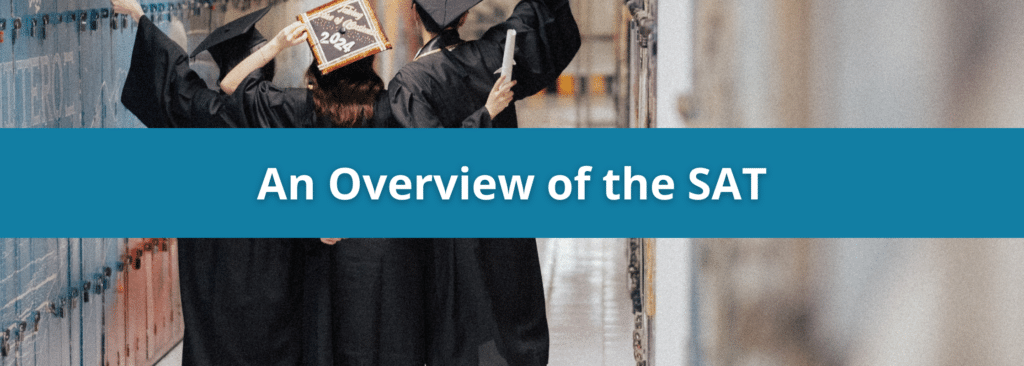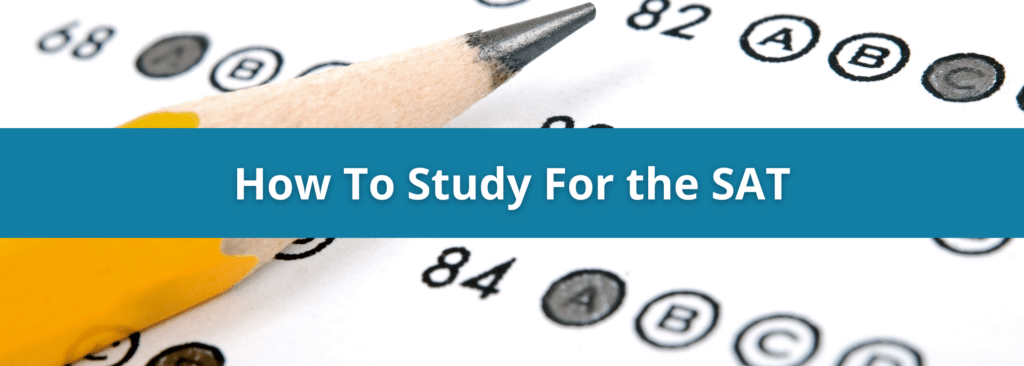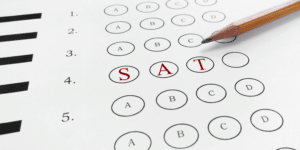In today’s competitive college admissions process, the SAT plays a crucial role in assessing a student’s academic preparedness. Colleges and Universities sift through thousands of applicants yearly, and they’re looking for those who stand out amongst those pursuing higher education. The significance of the SAT lies in its ability to provide standardized and objective measures to compare the large pool of applicants.
As educational curricula and grading criteria vary across institutions, the SAT provides a common metric that allows colleges to assess applicants fairly and consistently. This standardized test ensures that all applicants are evaluated on the same basis, minimizing any biases that may exist in the admissions process.
The exam’s structure and content require students to analyze and interpret information, draw logical conclusions, and apply their knowledge to solve complex problems. By assessing these higher-order thinking skills, the SAT provides colleges with valuable insights into a student’s ability to engage in rigorous academic work and thrive in a college setting. With that said, read on to learn how you can effectively study for the SAT!
The Importance of the SAT in College Admissions
The SAT plays a crucial role in college admissions for several reasons. Firstly, it provides colleges with a standardized measure of a student’s academic abilities and potential. As a standardized test, the SAT effectively levels the playing field for all applicants, regardless of their background or educational institution. It allows colleges to evaluate applicants based on uniform criteria, ensuring fairness and objectivity in the admissions process.
Moreover, the SAT serves as an indicator of a student’s preparedness for college-level coursework. The test assesses critical thinking, problem-solving, and analytical skills, which are essential for success in higher education. By evaluating an applicant’s performance on the SAT, colleges can gauge their ability to handle the rigors of academic life and thrive in an intellectually challenging environment.
Additionally, the SAT helps colleges in their decision-making process regarding scholarships and financial aid. Many institutions consider SAT scores when awarding merit-based scholarships, as these scores provide a level of distinction among applicants. Achieving a high SAT score can greatly increase the likelihood of receiving financial assistance, making the test an important factor for students seeking financial support.
Understanding the SAT
The SAT holds significant importance in the college admissions process by providing a fair and standardized measure of academic readiness and potential. By evaluating critical thinking skills, predicting college success, and allowing for a comprehensive assessment of applicants, the SAT helps colleges identify the most qualified and capable students.
With that being said, even though the test is standardized, there are many ways to approach studying for the test. Different techniques may work better for some students rather than others. Before understanding the SAT, it’s important to understand how you learn and can best retain information.

Overview of the SAT format
Although you won’t be able to anticipate the specific content of the questions on the SAT, you will know what subjects to expect. Each test includes a:
- 65 minute Reading Section
- 35-minute Writing and Language Arts Section
- 25-minute Math Section (no calculator)
- 55-minute Math Section (with a calculator)
Playing on your strengths, you can manage your time accordingly within those sections above. Each section can be approached differently, and giving yourself ample prep time can help you get acquainted with what those approaches could be!
SAT Sections: Reading, Writing and Language, and Math
Each section will consist of multiple-choice questions that correspond with the relative topic. You can expect to start your test with the Reading section which will test your reading comprehension skills. This section will be a combination of finding the main point of the chosen passage and recalling specific lines or details within the passage.
The Writing and Language portion of the test tests your ability to express ideas and evidence from an associated passage or prompt. This combines your reading comprehension with writing composed of evidence. Once you reach the final sections involving Math, with and without a calculator, you will be solving problems involving algebra, data analysis, and other advanced math topics.
SAT Scoring: What is a Good Score?
If you’re wondering what a good score on the SAT is, we’ve got you covered. Every section is scored ranging from 200 points minimum to the maximum of 800 points. Your score will be totaled after each section to give you a cumulative total at the end. The best score you can receive is 1600, which is a rare achievement!
If you’re more familiar with typical class grades, you’ll find that a score of 1033 is a 90.2% or an A-. Knowing your strengths and being able to study longer for the sections that are your weaknesses will help you target those potential areas for lost points.
Related Reading: How To Check Your SAT Scores & Interpret Your Score Report

Strategies For Studying & Preparing For The SAT
A large portion of getting ready to take the SAT has to do with your prep. Knowing what to expect on the test can relieve many pre-test jitters you may be having. Even before getting ready to take the test, you probably heard about the importance of the results from your peers. Your SAT score can help get you admitted to the school of your dreams!
Fortunately, the aforementioned skills can be practiced and perfected to get the best results on your test. Creating a study schedule, learning test-taking strategies, and preparing yourself for the test day are all ways you can plan to succeed. We’ve listed several ways you can tackle your study plans below.
SAT Tip #1: Creating a Study Plan
Now that you’re more acquainted with what the SAT entails, it’s time to come up with a study plan! Depending on your anticipated testing date, you may want to give yourself several months to prepare. We recommend scheduling weekly studying sessions that total between 2-3 hours.
Giving yourself the mental space and a quiet place to study can change the trajectory of your test results. Setting aside the time each week to study keeps the information fresh and easier to recall come test time.
Having a structured study plan is your first step in approaching the SAT. You’ll need to reflect on where you’re at academically and work on your weak areas accordingly. The longer you give yourself to prepare for the test, the longer you’ll have to get familiar with the formatting of the test.
The long duration of the test and the rigid time frames of each section are like training for a marathon. You may need to build up to enduring a three-hour, multiple-choice test. Due to the restricted periods for each section, it’s important to not get stuck on one question for too long.
Training yourself to answer questions quickly and accurately for hours is not a skill that comes naturally to everyone! The earlier you find out where you’re at academically, the sooner you can start working towards new academic goals.
SAT Tip #2: Assessing your strengths and weaknesses
Many people lean towards having an aptitude for one section’s subject over another. If you know you are strong with reading and writing but need help with math, you should use a larger portion of your study time on math. Make sure you are taking good notes during this time to track any patterns or questions you tend to get hung up on.
There are many opportunities to take practice tests online or in person. Some people find that they need to practice timing for the test. Taking at least one or two timed practice tests can help you get a better sense of how you will endure the test. Did you lose attention two hours in? Are you not able to finish each section before the timer goes off? Finding your areas of weakness can help you tackle the overall format of the test.
SAT Tip #3: Setting Realistic Goals
It can be very frustrating when it feels like you’ve been studying for long periods, putting in the work, and your results don’t match your efforts. Maybe your first few practice tests didn’t go as planned, but it’s important to set realistic goals for yourself based on where you’re at currently. Changing your perspective and embracing the studying journey will help ease the pain of mistakes.
Making mistakes is part of the process and shows growth! Being open to failure is the only way to persevere through the difficult test-taking process. Knowing yourself and giving yourself months to prepare will give you the grace period to remedy your mistakes.
SAT Tip #4: Creating an Effective Study Schedule
The best way to create a study schedule that you will routinely stick to is to create a habit. Some people can study in larger chunks of time once a week and others retain information better when they study a little bit every day. Students usually add this study time to their existing homework. Make a list of your weekly priorities to help gain an understanding of how your time needs to be managed.
Sometimes after a long period of studying it can feel like you’ve hit a wall. Along with scheduling study time, it’s important to schedule breaks. Taking a step away from the material can help you better retain the information once you return. Not only does it give your brain a break, but you’re more likely to keep your studying habits long-term.
SAT Tip #5: Partnering With an SAT Tutor
There are many different options available online to help you study SAT-related material. Whether you are more comfortable learning in a group setting or need private tutoring, the options are available to you.
Preparing for the SAT with a private tutor is like getting personalized attention on your strengths and weaknesses. This option is ideal for those with a busy schedule as it allows for more flexibility in scheduling meetings with tutors rather than teachers and students.
SAT Tip #6: Flashcards and Other Study Aids
Using study aids, such as flashcards, can be an effective way to prepare for the SAT. Flashcards are a popular study tool because they are portable, easy to use, and can be customized to focus on specific topics or areas of weakness.
The repetitive nature of using flashcards can also help with memorization and retention of information. In particular, SAT flashcards can be used to review vocabulary, math formulas, and other key concepts tested on the exam. By incorporating flashcards into their study routine, students can improve their chances of performing well on the SAT.
In addition to flashcards, there are other effective study aids that can be used for SAT preparation. These include practice tests, study guides, and online resources. Practice tests can help students become familiar with the format and types of questions on the SAT, while study guides can provide a comprehensive overview of the exam content.
Online resources, such as video tutorials and interactive quizzes, can also help reinforce key concepts and identify areas of weakness. By using a combination of study aids, students can develop a well-rounded study plan that addresses their individual needs and learning styles.
SAT Tip #7: Joining study groups or finding a study buddy
Joining an SAT study group or finding a study buddy can provide a range of benefits for students preparing for the exam. One of the most significant advantages is the increased motivation and accountability that comes with working alongside others. When students are part of a group or have a study partner, they are more likely to stay on track with their study schedule and avoid procrastination.
Study groups can be especially helpful for students who struggle with self-discipline and time management. Another benefit of joining an SAT study group or finding a study buddy is the opportunity for collaborative learning and brainstorming. When students work together, they can share their knowledge and insights, ask questions, and get feedback on their ideas. Collaborative learning also encourages critical thinking and problem-solving skills, which are essential for success on the SAT.
Final Thoughts On How To Study For The SAT
There are many ways you can approach the SAT. If you take the time to study at your own pace with the tools that work best for you, you’re bound to succeed. Taking the SAT may be the one obstacle between you and the University of your dreams, so it’s worth the amount of time you’ll spend studying and you’ll be glad you took the time to prepare!
Related SAT Resources:
- SAT Section 5: What Students Need To Know
- How Long Is the PSAT? An Overview
- How Much is the SAT? An Overview of Fees and Registration Costs
- Choosing Between Taking the SAT and the ACT
- An Overview Of the SAT & SAT Test Prep
- 100 Ways To Increase Your Score on the SAT
- 2024 SAT Test Dates & Registration Deadlines




